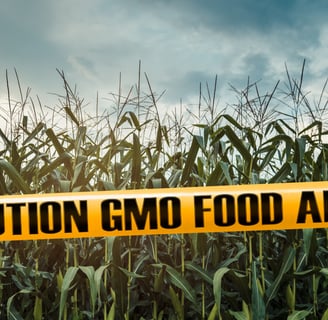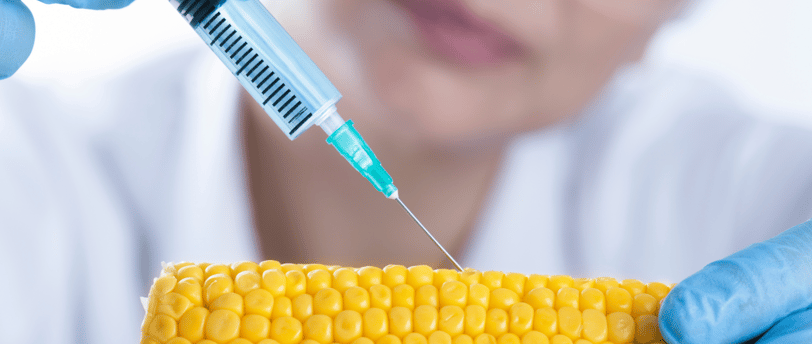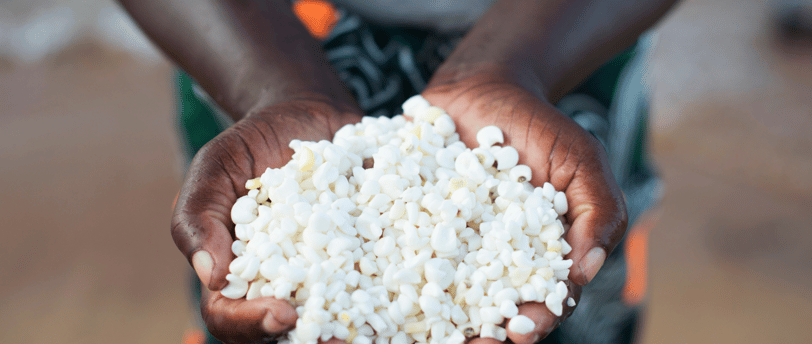"Frankenstein Food" vs. Traditional Farming: Implications for Uganda and Solutions for Sustainable Agriculture
In Uganda, agriculture is the backbone of the economy, supporting around 70% of the population and providing food security and livelihoods for millions. However, as climate change and population growth increase demand for resilient and high-yield crops, genetically modified organisms (GMOs)—often called "Frankenstein foods"—have started to enter the conversation.
Alfred Okello
11/5/20245 min read


In Uganda, agriculture is the backbone of the economy, supporting around 70% of the population and providing food security and livelihoods for millions. However, as climate change and population growth increase demand for resilient and high-yield crops, genetically modified organisms (GMOs)—often called "Frankenstein foods"—have started to enter the conversation. While GMO crops are praised for their potential to boost food production, they also bring up concerns about environmental impact, health risks, and the livelihoods of small-scale farmers. For Uganda, balancing GMO technologies with traditional farming practices presents a unique set of challenges and opportunities. This blog will explore the impact of GMOs on Ugandan farmers, the country’s rich agricultural heritage, and potential solutions to ensure a sustainable and fair food system.
What Are "Frankenstein Foods"?
The term "Frankenstein foods" is often used to describe GMOs—crops genetically altered to enhance specific traits, like pest resistance or drought tolerance. These crops are created by inserting genes from one organism into another to make the plant more resilient in challenging climates. In Uganda, where farmers face threats like drought, pests, and unpredictable weather, GMOs are positioned as a way to increase yields and reduce losses.
Advocates of GMO crops argue that they can play a critical role in addressing food insecurity. However, concerns remain over the environmental and health impacts of these modified foods, as well as the socioeconomic effects on Uganda’s farming communities, particularly those dependent on traditional farming methods.
Traditional Farming in Uganda
Uganda has a deep-rooted tradition of small-scale, subsistence farming, where farmers grow a diverse range of crops, often with indigenous varieties well-suited to local climates and soils. Many of these crops—such as maize, cassava, millet, and sweet potatoes—are grown from heirloom seeds that have been cultivated and passed down through generations. Traditional farming in Uganda emphasizes crop diversity and rotation, natural fertilization methods, and a close relationship with the land, which collectively contribute to soil health, biodiversity, and cultural heritage.
The majority of Ugandan farmers are smallholders who rely on open-pollinated or heirloom seeds, which they can save from year to year. This independence is crucial for small-scale farmers, who may not have the financial resources to purchase new seeds or chemicals each season. Traditional methods also help preserve Uganda’s biodiversity, which is essential for resilient agriculture in the face of changing weather patterns.
Impact of GMOs on Ugandan Farmers
Genetically modified crops, though relatively new to Uganda, have been marketed as a solution to agricultural challenges. However, the adoption of GMOs has significant implications for the country’s small-scale farmers:
Economic Dependency: GMO seeds are often patented, meaning that farmers cannot save seeds from one season to the next and must purchase new seeds each year. This can create a cycle of dependency on seed companies, driving up costs for farmers who previously relied on free or low-cost traditional seeds.
Loss of Biodiversity: GMO crops are usually bred for specific traits, like pest resistance or high yield, which can lead to monoculture farming. This threatens local plant varieties and reduces crop diversity, making farms more vulnerable to disease or pest outbreaks.
Health and Environmental Concerns: While there is no definitive evidence that GMO crops are harmful to human health, many Ugandans are concerned about the potential risks. Moreover, GM crops often require specific chemical inputs, like herbicides or pesticides, which can degrade the soil, pollute water sources, and harm local ecosystems over time.
Impacts on Poor Communities: Smallholder farmers in Uganda, who often have limited financial resources, are especially vulnerable to the high costs and risks associated with GM crops. For these farmers, traditional farming offers food security and independence, while GM crops can push them into debt or dependency.




GMOs and the Ugandan Consumer
In Uganda, as in other developing countries, many consumers are cautious about GMOs. Although these crops could theoretically lower food prices, any savings are often offset by the high costs associated with their production. Additionally, limited public awareness and labelling requirements make it difficult for consumers to make informed choices about whether they want to support GM or traditionally farmed products.
Potential Solutions for Uganda’s Agricultural Future
To balance the potential benefits of GMO technology with the unique needs and strengths of traditional farming in Uganda, a multi-pronged approach is essential. Here are some strategies that can help Uganda navigate the GMO debate and create a sustainable agricultural system:
Empowering Small-Scale Farmers: Providing resources, training, and subsidies to small-scale farmers can help them adopt sustainable farming methods and access high-quality seeds without becoming dependent on large seed companies. Governments and NGOs can play a key role in supporting smallholder resilience through initiatives that strengthen traditional practices.
Investment in Indigenous Seeds and Biodiversity: Uganda has a rich variety of indigenous crops, and preserving these seeds is crucial for agricultural diversity and climate resilience. Establishing community seed banks and encouraging the exchange of open-pollinated and heirloom seeds can empower farmers to remain self-reliant and protect Uganda’s biodiversity.
Strengthening Agroecology Practices: Agroecology, which combines traditional agricultural knowledge with ecological science, can help farmers increase productivity while conserving natural resources. In Uganda, agroecology could promote sustainable farming practices that prioritize soil health, water conservation, and ecosystem balance, allowing farmers to boost yields without resorting to GMOs.
Raising Public Awareness and Labelling: Transparent labelling of GMOs can empower Ugandan consumers to make informed choices about what they eat. Public awareness campaigns can help people understand the advantages and potential risks of GM foods, fostering a more informed public dialogue about agricultural choices.
Policy and Regulatory Framework: Uganda can establish a regulatory framework that balances the use of GMOs with protections for traditional farming. This may include policies that require GMO companies to support biodiversity initiatives or that mandate the availability of non-GMO seeds alongside GMO options.
Encouraging Local Research: Investing in local agricultural research can enable Ugandan scientists to develop crop varieties suited to local climates and challenges without relying on foreign biotech companies. Uganda can create its own, more sustainable solutions by combining traditional agricultural knowledge with research into crop resilience.
Conclusion
Uganda faces a complex choice between embracing GMO technology and preserving its rich agricultural heritage. While GMOs offer a tempting solution to food insecurity and climate challenges, the associated costs, environmental risks, and loss of independence can be significant for Uganda’s small-scale farmers. By supporting traditional farming, preserving biodiversity, and promoting sustainable practices, Uganda can forge a path to agricultural resilience that respects both its unique ecology and the needs of its people.
Sustainability
Contact us
Sections
info@korofarmstay.life
© 2024. All rights reserved.
subscribe
